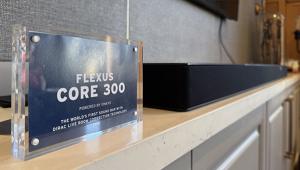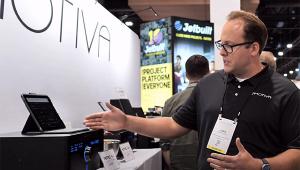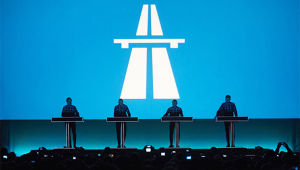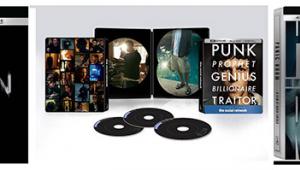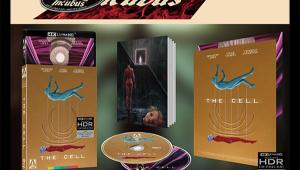Let me know when I can walk into my local BB and plop down a tenth of the present asking price. That is the trouble with Apple, they make fine stuff, but they ask far too much for it. Trouble is, people will pay it. Come on Samsung, or Hisense maybe, get competetive.
Apple Vision Pro: Facing the Future
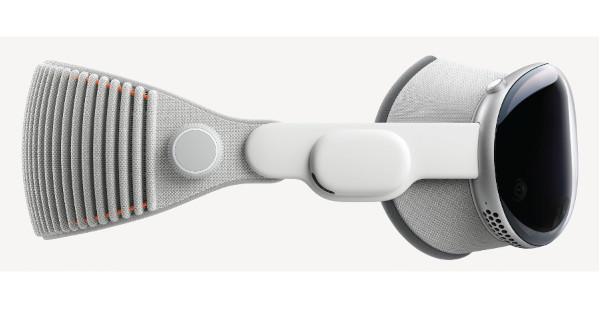
Since last year when Tim Cook, Apple’s CEO, announced this groundbreaking product, I’ve been intrigued by the prospect of revisiting a type of personal technology that’s been kicking around for 30 years but has never broken into the mainstream. Once Vision Pro went on sale in February, I was able to book a demo at my closest Apple store through the company’s website.
The first half of the demo is reserved for fitting and training. Frida, my personal guide (a real person), began by scanning my eyeglasses so that the proper corrective lenses could be magnetically attached to the headset. Like a custom tailor, she adjusted the straps so that the 1.4-pound display rested comfortably on my head and upper face. She took me through a series of steps in which Vision Pro learned the layout of my face, and I learned to use my fixed gaze as a pointer and tap two fingers as a selector. No need for a mouse or joystick. Cameras on the Vision Pro track the whereabouts of my pupils and digits.
I worried about a subset of Vision Pro trainees who are cross eyed or walleyed. Would their disabilities confuse Vision Pro? Later I discovered that Apple devotes a section on its support site to diagnosed vision conditions. Users can customize which eye they use to control Vision Pro. They can choose both eyes, left eye only, or right eye only.
Then the fun began. I was soon watching a birthday party recorded on home video using an iPhone 15 Pro in which a kid appears to pop out of the screen as he blows out candles. Another child was waving a wand to create soap bubbles that seemed to escape the frame. Then I watched as a woman walked a tightrope across a canyon. When I looked down, the depth of the drop was breathtaking.
Indeed, Vision Pro resurrects 3D, an electronic sleight of hand produced on certain TV sets as seen by viewers donning shutter glasses in the early 2010s. The hype back then produced a collective yawn that caused manufacturers to withdraw the feature on subsequent models. But the 3D effect delivered by Vision Pro is more enthralling. Maybe it’s because of the personal nature of the display to which you’re already attuned. The depth perception in Vision Pro feels natural, intrinsic to the experience. Having seen Avatar: The Way of Water in 3D in a movie theater, I was impressed with how good a clip from the movie looked during the demo.
In calling Vision Pro a computer, albeit a spatial one, the company hopes to capture buyers in the business of productivity. But for now, this is an Apple pipe dream. Office workers aren’t about to trade their laptops for a computer worn on their faces 8 hours a day. Meanwhile, content creators can get more bang for the buck using workstations and multiple monitors.
Still, Vision Pro is a complete computer. It doesn’t require a Mac or a MacBook. However, you might want to have one nearby to type faster. Apple lets you see your Mac desktop in a Vision Pro window. You can also use a Bluetooth keyboard.
If a killer app is to emerge, it will be in the realm of entertainment. While some will point to Vision Pro’s potential for connected video game play — an application that wasn’t even shown — my favorite part of the demo was using Vision Pro as a personal movie theater. You can adjust how near you are to the screen by gesturing for the picture to come closer, pulling it toward you so you have the best seat in the house. The 23-million-pixel Micro‑OLED display was better than the resolution of my 4K TV. In fact, Vision Pro might cause you to think less of your TV, which would be a crying shame since you still must come home to your TV every night.
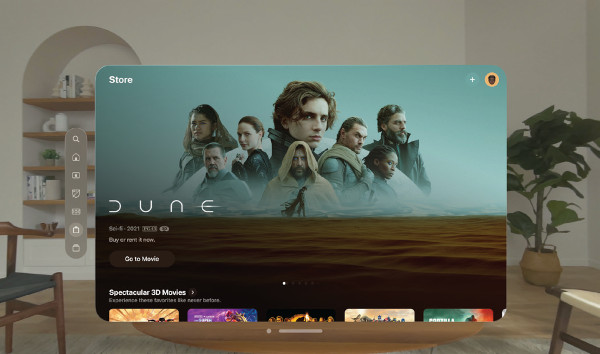
According to Apple, there are more than 275 3D movies available on Vision Pro. They include Max Max: Fury Road, Gravity, Pacific Rim, Trolls: Band Together, and Edge of Tomorrow. Dune: Part Two did not include a 3D edition, but Dune (2021) is available in 3D. IMAX fans should be particularly impressed with the IMAX app on Vision Pro supporting an aspect ratio of 1.43:1. IMAX documentaries include A Beautiful Planet 3D, Pandas 3D, Superpower Dogs 3D and Deep Sky.
Those who have taken Vision Pro on airplanes report that using it to watch movies provides escapism at the maximum point of need with the caveat that content should be downloaded into the device before boarding since airline Wi-Fi can be spotty and frustrating. While Apple TV+ and Disney+ support the device with native apps, Netflix chose not to support it at launch. Using a browser such as Safari is a workaround, but it’s the app that provides the download capability.
It’s been reported that a Vision Pro app is on YouTube’s roadmap. Direct support could greatly increase Vision Pro’s content since YouTube already offers a large library of 360 and VR videos. Picture quality may be a stumbling block, however, since much of that preexisting content was created for lower-resolution and less capable devices.
Remember Google Cardboard? In what seems like a lifetime ago, I used one in 2015 to hold an Android phone while “walking around” the stage where Paul McCartney was performing “Live and Let Die” during the last concert at Candlestick Park. Equating Vision Pro to that earlier experience is like comparing riding on a Dreamliner to the Wright Brothers’ plane.
Battery time was once an issue when flying with personal electronics. Apple claims that the included battery lasts up to 2 hours with general use and provides up to 2.5 hours of uninterrupted video watching. With today’s planes typically providing in-seat charging, it’s good to know that Vision Pro can charge and play at the same time.
Beyond solitary viewing, it’s not a stretch to imagine that the movie theater of the future will allow, even require, customers to bring their own screens. We already have silent discos in which personal headphones substitute for room speakers. Tomorrow’s theater would supply reclining seats and blazingly fast Wi-Fi and sell you overpriced popcorn. Since humans are social creatures, there’s value added when people share entertainment together. Being able to laugh, cry, or be taken by surprise are experiences that won’t disappear just because you bring your own screen (BYOS).
I was less impressed with the sound that poured out of Vision Pro. Apple gushes over the device’s “personalized spatial audio and audio ray tracing.” What I heard was stereo emanating from the Vision Pro frame, though you’re likely to have a more immersive experience ensconced in Apple’s AirPods Pro earbuds. Apple should create another demo emphasizing discrete sound effects and their directions of origin based on where your head is turned. Spatial audio may yet prove to be one of Vision Pro’s hidden talents.
Apple has not promoted Vision Pro as a gaming headset. For that, you’re better off with a Meta Quest 3 headset ($500). One reason is that Vision Pro lacks a tracked controller like a joystick, relying instead on cameras following the position of your hand and pinch gestures. Still, there is potential for spatial gameplay. Though I didn’t try it, Apple Vision Pro Chess enables you to virtually “pick up” pieces instead of sliding icons across the screen as you might on an iPad or iPhone. Moreover, the virtual chess board is laid out in front of your eyes without having to dislodge a plate of nachos from the table. (Chess is part of a subscription to Apple Arcade, which is sold separately.)
I agree with analysts following virtual reality that a mixed reality (XR) or augmented reality (AR) approach is more appealing to users than a closed VR system. In the demo, I appreciated being able to control the level of opacity. By turning what Apple calls the digital crown, a knob on the top right of the headset, I could choose to see Frida in front of me or shut her out entirely with varying degrees of porosity in between. An office setting might require you to be aware of nearby colleagues. But in a virtual home theater, you’d want to draw the curtains as tightly as possible to enjoy the movie in a fully immersive environment.
The way people nearby see you as you wear a Vision Pro headset is innovative. Rather than being blocked by an impervious visor on your face, they perceive your actual eyes. They don’t see your eyes directly, since the visor material is anything but transparent, but on the outside of the visor is another screen that displays your eyes in real time as captured by the same cameras tracking your eyes as pointers. The result is that those near you don’t feel completely cut off from you. At the same time, you don’t necessarily feel isolated from them thanks to the immersion control. It’s taken decades of failed products to reach this level of awareness.
Vision Pro is $3,499 with 256GB of storage onboard; $3,699 with 512GB; or $3,899 with 1TB. The Zeiss Optical Inserts for those who wear prescription glasses is an additional $149. An extra battery is $199.
I came very close to handing my credit card to Frida. I pulled back, though, when I realized that I’d recently been criticized for staring at my iPhone excessively. Getting close to an even more addictive screen could easily lead to divorce. Still, now that Apple has checked my vision, measured my face and saved the parameters along with the list of options I was planning to buy, I can easily click the buy button from home. So, it’s not a question of whether I’ll buy a future generation of Vision Pro. It’s only a matter of when.
The Author
Michael Antonoff is a freelance writer specializing in AV technology and industry trends. He was a senior editor for Popular Science, executive editor for Video magazine, technology editor for S&V, and a tech columnist for USA Today.
- Log in or register to post comments

Wow, your detailed account of experiencing Vision Pro at the Apple store is truly captivating! It sounds like a futuristic marvel that blends cutting-edge technology with immersive experiences. The personalized fitting and training session with Frida sounds like a thoughtful touch, ensuring comfort and functionality tailored to each user. The 3D capabilities and high-resolution display that rivals your 4K TV are especially impressive. While I share your hesitation about integrating such a powerful device into daily life, the potential for personal entertainment and maybe even productivity applications is undeniable. Thanks for sharing your firsthand insights into this exciting new frontier of technology!
Best regards,
Kaise Kare

The Apple Vision Pro sounds like an incredible leap forward in personal technology, offering a truly immersive experience that seems to blend seamlessly with the user. The attention to detail in customizing the fit and functionality highlights Apple's commitment to user experience. As we embrace such advancements, it's also exciting to think about how innovations like these can enhance travel experiences, much like the personalized travel solutions offered by ClearHolidays™ India. It's fascinating to see how this technology, which has been around for decades, is being reimagined and brought closer to the mainstream.

Submitting the blog post "Apple Vision Pro: Facing the Future" to A2Bookmarks Netherlands provides an excellent opportunity to showcase the innovative features of Apple's new virtual reality headset. Michael Antonoff's review offers an engaging glimpse into the future of technology, highlighting the impressive capabilities of the Vision Pro, which Apple describes as a "spatial computer." His firsthand experience and anticipation surrounding this product can generate significant interest among tech enthusiasts in the Netherlands.
By featuring this post on the Netherlands 2025 Social Bookmarking Website, readers in the region can gain valuable insights into a cutting-edge technology that could revolutionize personal tech experiences. This exposure not only introduces the Vision Pro to a broader audience but also connects Dutch technology aficionados with the latest advancements in virtual reality, sparking discussions and curiosity about its potential impact on the tech landscape.

The changes in technology have been crazy recently https://paintersnorthport.com/

For quick updates on smartphone prices, I prefer Whatmobilez. The platform is straightforward, and their information on the latest what mobile prices is always up-to-date.

Wow! This is new to me. Glad to check this here. Superior Fence Shreveport Fence Contractor

This is of good quality and worth the buy. stone masonry

How much does this cost now? land clearing company

Users can customize which eye they use to control Vision Pro. The drywall contractors can choose both eyes, left eye only, or right eye only.













